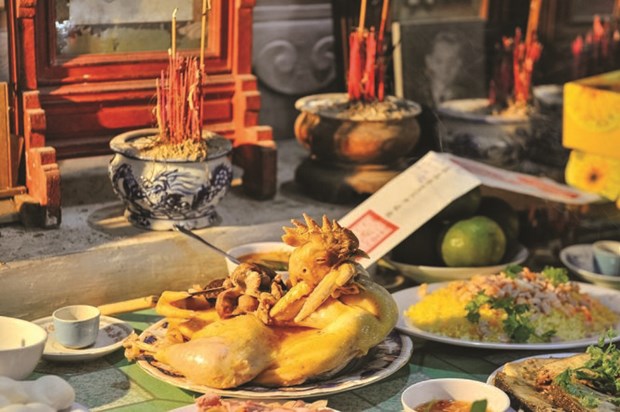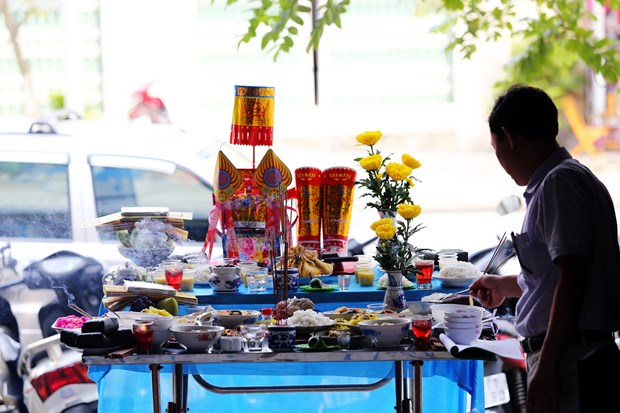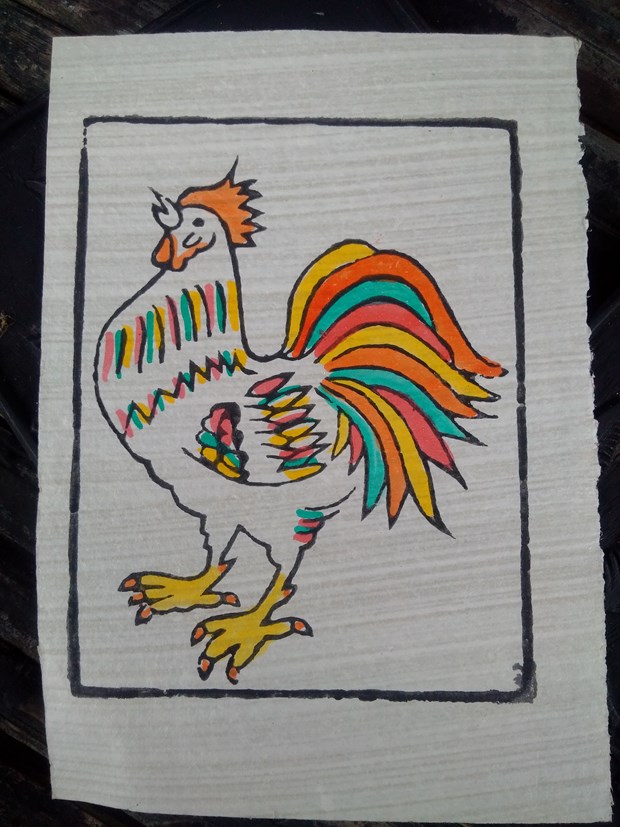Roosters have always been the go-to choice for Vietnamese families when it comes to adding an offering to their late ancestors or religious deity monuments, but why?

A Vietnamese table of offerings with a boiled rooster in the center. Photo: Tuoitre
Tet,
or Lunar New Year, which falls on January 28, marks the transition from the
Year of the Goat to the Year of the Rooster, according to the 12-year cycle of
animals which appears on the Vietnamese zodiac.
Among
the many activities observed by the Vietnamese during this festive time of year
is the practice of making offerings to late ancestors and various deities in
the country’s folk religion, in the hope for a new year of abundance, luck, and
good health.
There
is no documented rule on which food is appropriate or recommended for these
offerings, but families in Vietnam, especially those in the northern and
central parts of the country, tend to stick to the age-old custom of including
a rooster, preferably in the most prominent place on the offering table.
The
de-feathered rooster must be unbutchered and boiled, with its wings clipped
neatly across its throat and its head turning toward the most sacred item on
the altar – typically an incensory or plaque.

A Vietnamese table of offerings with a boiled rooster in the center. Photo: Tuoi Tre
According
to Hue-based cultural researcher Tran Dai Vinh, roosters are often selected as
the main dish for offerings due to their charisma and abundance in Vietnam.
“The
rooster is the most beautiful, powerful and majestic of all poultries. It is
also readily available throughout the year,” Vinh explained. “Its meat is tasty
and comes at an affordable price for the majority of Vietnamese people.”
“Roosters
also choose to sleep on high ground or on top of trees, making them one of the
cleanest farm animals,” Vinh added.
According
to Vinh, the posture of a cooked rooster also resembles a person kneeling in
prayer, which makes it the perfect item for offering.
Vinh
also explained that there is a symbolic reason why roosters, not hens, are
chosen for the offering, considering the two share similar qualities.
According
to Vietnamese culture, it is considered a taboo to use pregnant animals as
offerings, so roosters are often preferred over hens to avoid any mistakes.
However,
hens can be used to offer to the Twelve Midwives, or twelve fairies in
Vietnamese folk religion who teach babies various prosperous traits and skills,
such as smiling, when the baby turns one month old.
Another
reason for roosters to be favored over hens in religious rituals, according to
Ho Chi Minh City-based cultural expert Tran Dinh Son, is that in the past,
roosters played an important role in helping Vietnamese farmers keep track of
time before the introduction of mechanical clocks.
Farmers
would get up at the crow of roosters in the morning to hit the paddle fields,
while their crow is considered sacred as it also ‘wakes up’ the sun and heralds
the breaking of a new day, Son explained.

A woodblock-printed rooster drawing in the traditional style of Sinh Village in central Vietnam's Hue City. Photo: Tuoi Tre
By Tuoitrenews